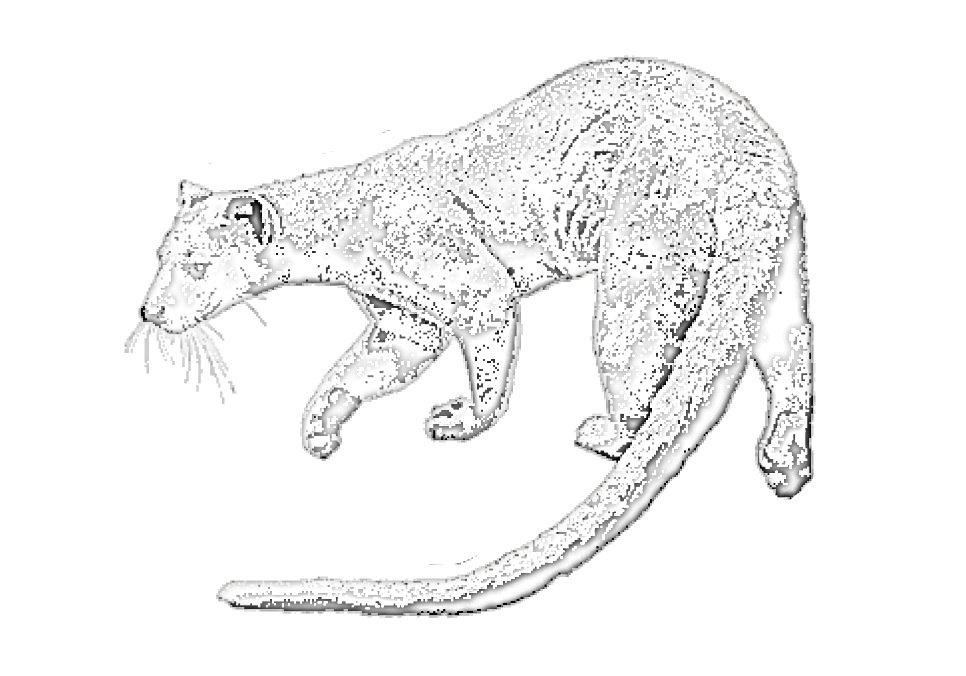Madagascar's Carnivora
Madagascar has a rather fascinating native Carnivora fauna.
Eleven (11) species of carnivores are spread in two families all over the island:
- Eupleridae
- Viverridae
Ten (10) species are endemic and one (01), the Viverricula indica is also found throughout southern Asia and was probably introduced to the island by immigrants.
According of the IUCN Red List of Species, Eight (08) species were found to be threatened to extinction in Madagascar:
- 03 species are endangered
- 03 Vulnerable
- 02 Near Threatened)

List and classifications
| N | Family | Species | Common name | Distribution - Habitat | Red List |
|---|---|---|---|---|---|
| 1 | Eupleridae (Euplerinae) | Cryptoprocta ferox* | Fosa | Widespread | VU |
| 2 | Eupleridae (Euplerinae) | Eupleres goudotii* | Eastern Fanalouc | Humid forests of the E and far N | EN |
| 3 | Eupleridae (Euplerinae) | Eupleres major* | Western Fanalouc | Sambirano and South to the Soalala region | EN |
| 4 | Eupleridae (Euplerinae) | Fossa fossana* | Striped civet | Hunid forest of the E and N | NT |
| 5 | Eupleridae (Galidiinae) | Galidia elegans* | Malagasy ring-tailed mongoose | Humid forests of the E, far north and limistone areas of Central W | LC |
| 6 | Eupleridae (Galidiinae) | Galidictis fasciata* | Broad-striped mongoose | Hunid forest of the E | NT |
| 7 | Eupleridae (Galidiinae) | Galidictis grandidieri* | Giant Striped (Grandidier's) mongoose | Mahafaly plateau | EN |
| 8 | Eupleridae (Galidiinae) | Mungotictis d. decemlineata* | Northern Bokiboky | Central Menabe | VU |
| 9 | Eupleridae (Galidiinae) | Mungotictis d. lineata* | Southern Bokiboky | Manombo River Valley, N of Tulear | NA |
| 10 | Eupleridae (Galidiinae) | Salanoia concolor* | Brown tailed mongoose | Humid forests of the E and far N | VU |
| 11 | Viverridae | Viverricula indica** | Small Indian Civet | S and SE Asia, Madagascar | LC |
IUCN Red List:
CR: Critically Endengered (The species is facing an extremely high risk of extinction in the wild)
EN: Endangered (The species is facing a very high risk of extinction in the wild)
VU: Vulnerable (The species is facing a high risk of extinction in the wild)
NT: Near Threatened (The species does not currently qualify as being at high risk of extinction but it is likely to do so in the future)
LC: Least Concern (The species is not currently at risk of extinction in the wild)
DD: Data Deficient (There is inadequate information to assess the risk of extinction for this species)
NE: Not yet Evaluated
Distribution
* : Endemic species
**: Introduced species
